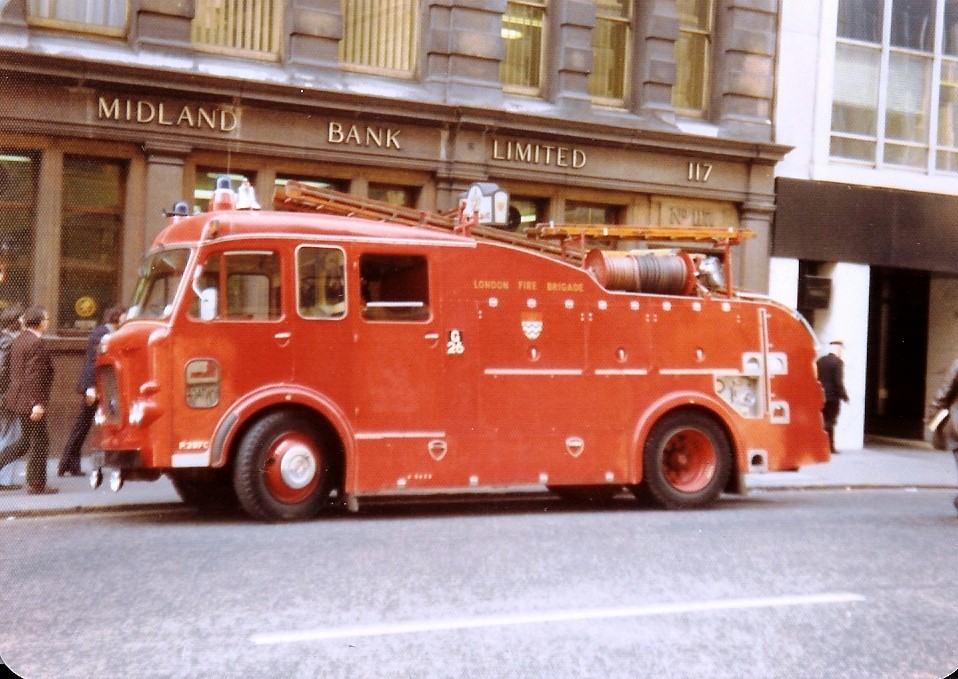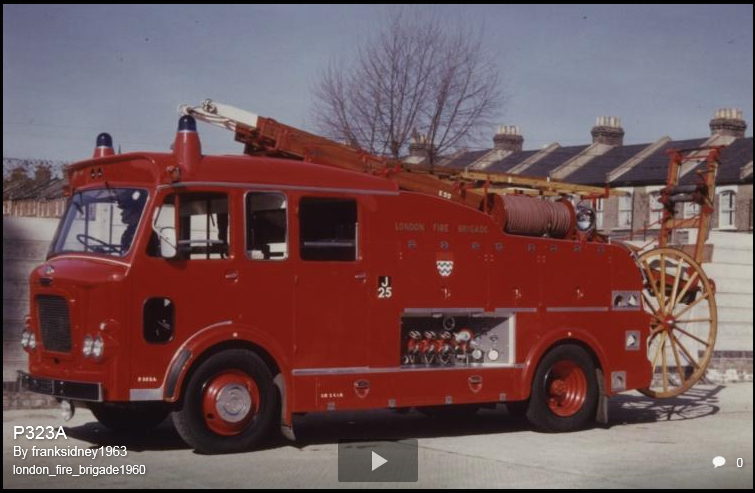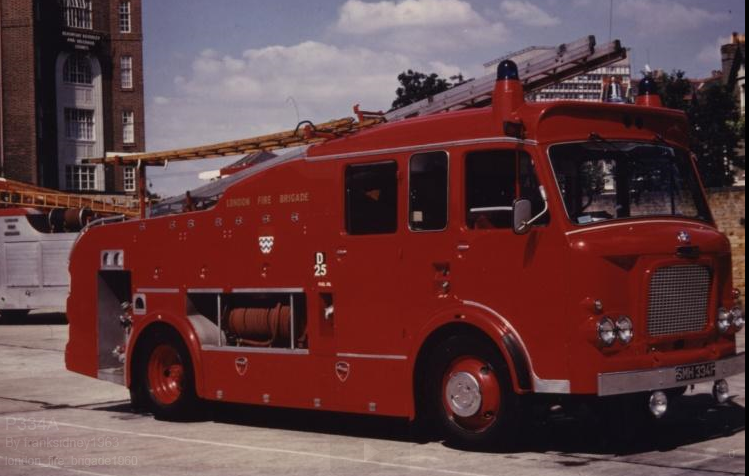The design and subsequent metamorphosis of the London Fire Brigade Dennis F106 appliance during the 1960s was to prove pivotal, shaping the appearance and functionality of all London’s pumping appliances for a whole decade thereafter.
Produced from 1963 by Dennis Bros of Guildford in conjunction with the petrol engined F34 & F38 models, the F106 was powered by a 6 cylinder AEC diesel engine complete with a Dennis No.3 pump capable of delivering between 900 to 1000 gallons-per-minute.
I first became aware that this one appliance designation had a multitude of design differences and was also often confused with the later F108 and F109 models around twenty years ago, when as an active member of an online LFB history forum the differences became clear. Upon further research it transpired there were in fact no less than seven variants (including the eight Dennis F111’s, identical but for an automatic gearbox).
All built to the classic London ‘chariot’ style for carrying the 50ft wheeled escape ladder closely resembling the Dennis F101s of the 1950s, the first batch of nine F106s were delivered in 1963 to the then, London County Council LFB. They had a midships mounted pump with six deliveries, three on each side, a 100 gallon tank and roof mounted hose reels. At the time these were allocated fleet numbers 206DP-214DP.
F106 Batch 1, LCC, AEC Diesel 1963
206DP-214DP (Later P206A – P214A) 206FLM-214-FLM

Upon the re-organisation and enlargement of the LFB due to the creation of the Greater London Council on 1 April 1965 the London Fire Brigade undertook a complete fleet re-numbering exercise. This incorporated all inherited appliances and numbered them in sequence with the existing fleet. Thereupon all pumping appliances had a P prefix and either an A, C or D suffix after the fleet number denoting the following:
- A – Midships pump and 100 gallon tank.
- C – Rear mounted pump with side controls and 300 gallon tank.
- D – Rear mounted pump with rear controls and 300 gallon tank.
I can find no evidence of a B suffix and if anyone can enlighten me why I would be most grateful to know! Contact us!
Immediately prior the birth of the GLC in early 1965 the LFB took delivery of the eight C registered auto-box Dennis F111 Pumps. Delivered as 215DP – 222DP these soon were re-designated P215A-P222A.Subsequent pumps were ordered for delivery in 1966. There has been some speculation that the fifty five 1966 appliances formed part of a batch initially ordered by the Middlesex Fire Brigade prior to being absorbed into the London Fire Brigade. I am unsure this is the case as the specification of the first four delivered, P288A-P291A were virtually identical to the 1963 F106 and 1965 F111 order (bar the automatic gearbox) with a midships pump and 100 gallon tank. The London Fire Brigade information book published in late 1965 states that all of the new pumping appliances on order either have a 100 gallon tank for inner city use or a 300 gallon tank for the outer London stations.
F111 Batch 1, LFB AEC Diesel (Automatic) 1965
215DP-222DP (Later P215A-P222A) CYE215C-CYE222C

F106 Batch 2 LFB AEC Diesel 1966
P288A-P291A JYH288D JYE289D-JYE219D

From P292C-P307C &-P308D-P319D onwards, designations become a little confused. All these machines now have a rear mounted pump with rear controls, four deliveries and a 300 gallon tank. The first fifteen C suffix appliances had a regular trunnion bar for an escape ladder and were allocated to mainly ex-Surrey stations with a few dispersed to North West and East London too. The last eleven with a D suffix were delivered to new E and H Divisions comprising mainly ex-Kent and Croydon Fire Brigade Stations and had the gantry and mountings enabling them to carry the steel Merryweather 45ft ladder.
F106MK2 Batch 3 LFB AEC Diesel 1966
P292C-P307C JYE292D-JYE307D

Strangely some of these machines are designated WRL’ and PL when on the run. PL makes sense but WRL would imply a 400 gallon tank which has never been a London specification or necessity.
F106 Batch 4 AEC Diesel Merryweather 45ft. WRL, PL & P LFB 1966
P308D-P319D JYE308D-JYE319D

Around 1970-71 the 45ft ladders were withdrawn by the LFB and these appliances converted to carry a regular wheeled escape ladder. I am curious to know if they retained their D suffix? Another question, of course, is why doesn’t the whole batch with the rear mounted pumps and controls (P292C-P307C & P308D-P319D), show the D suffix?
Moving on to 1968 and the Brigade orders a further batch of twenty-five F106 appliances. Another noticeable detail change with these appliances was the flat front to the roof line above the windscreen incorporating the two-tone horns. The first 10 of these were to A specification and the final and most noticeable different to the last C suffix batch was now the rear mounted pump with side controls each with two deliveries per side.
F106 Batch 5, AEC Diesel LFB 1968 Modified Roof Line
P320A-P330A SMH320F-SMH330F

The journey was now complete and the London Fire Brigade settled upon the classic design of which all future pumping appliances through to 1978 will closely resemble. The next two hundred and forty Dennis F108, F109, ERF84PS & Dennis F131’s owed their elegant lines to the Dennis F106.
Last F106’s, Batch 6 AEC Diesel LFB 1968
P331C-P343C SMH331F-SMH343F

Article by Kyle Annakin
Thanks to Frank Sidney, Mike Cotton and NA3T for the photographs.